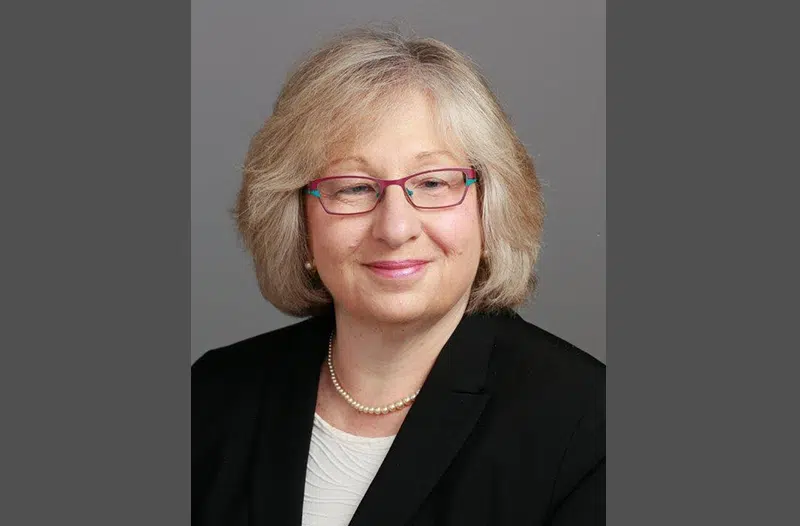By Susan Feinberg
Breast cancer on both sides of the family
Like many FORCE members, there have been many cases of breast cancer in my family. It was almost expected that women on my father's side of the family would eventually be affected, and I lost my mother's only sister to breast cancer as well. My first cousin's daughter was diagnosed on her 30th birthday, and she later learned she was BRCA1 positive. Her mother and brother also tested positive for BRCA1 187delAG. I knew this, and I figured I would eventually be tested but I never made it a priority.
FORCE brochures as wedding favors
In January 2009, I congratulated myself for making it to age 50 without having breast cancer. But I did have breast cancer. In May of that year, I found a lump that had not been detected in my annual mammogram and immediately got it checked out.
While I was waiting for my biopsy results, I first heard about FORCE at, of all places, a family wedding. And what a wedding it was! The bride and her father were BRCA2+; the groom (my cousin's son) was BRCA1+, as were his mother and his sister. Both families had lost many, many beloved family members to cancer.
As you can imagine, the last thing that anyone in the wedding party wanted to hear was that I was waiting for biopsy results. So, I kept the biopsy a secret, smiled as best I could, danced with my cousins, kept my anxiety to myself and read with great interest the FORCE brochure that the newly married couple left on the tables for every guest instead of wedding favors.
Two cancer diagnoses
A week later, I received my diagnosis and had an appointment with a genetic counselor. While I awaited my genetic results, I spent many hours scouring the FORCE website for information because I assumed that I was BRCA1+. I went ahead with surgery (lumpectomy), and a few weeks later my BRCA1 status was confirmed.
The following 12 months were a blur of more surgery, chemo, serious complications and radiation. During that time, although I wasn't interacting with anyone from FORCE, I continued to rely on the website site for information.
About 13 months after being diagnosed with breast cancer, I was diagnosed with fallopian tube cancer after my preventative BSO (Bilateral Salpingo-Oophorectomy) turned out to be not preventative at all. While the BSO, which removed my ovaries and fallopian tubes, was too late to prevent my 2nd cancer, it still ended up saving my life. Once I recovered from the follow-up surgery (hysterectomy), I was ready to get involved with FORCE.
Volunteering for FORCE
In 2011, I attended my first FORCE event, the Joining FORCEs Conference. The conference was overwhelming in so many different ways — to meet so many people with similar experiences and fears, to learn so much from the world's foremost HBOC experts and to be inspired by some of the strongest and smartest people I've ever met. I knew my life would never be the same, but I wasn't quite sure in what way it would change.
A few months after the conference, I decided to volunteer to help FORCE get the word out so other people's lives could be saved like mine was. Since then, I have helped to grow FORCE's social media accounts and served as the Boston area outreach coordinator and a peer navigator. In recent years, I have also spoken out in support of clinical trials as a hereditary cancer research advocate for FORCE. Little did I know, that advocacy work would come to impact my life directly.
A third cancer diagnosis
In 2019, despite my preventative BSO and hysterectomy, I was diagnosed with primary peritoneal cancer. A close relative of ovarian cancer, primary peritoneal cancer occurs in the lining of the abdominal organs and the five-year survival rate has historically been lower than 50 percent.
While being diagnosed with cancer three times may sound like bad luck, I feel incredibly lucky to be diagnosed when I was. Thanks to recent discoveries made possible through clinical trials research, I was eligible to follow my initial treatment of six rounds of intravenous chemotherapy with a targeted oral maintenance therapy. This involves taking four pills a day and boosts my odds of beating cancer to 70 percent. This breakthrough treatment that greatly improves my prognosis – and the prognosis of countless others fighting hereditary cancer – is called a PARP inhibitor.
Today, I feel lucky to be alive, lucky to be in the first generation of women with HBOC who have a chance to live a normal lifespan, lucky to have found FORCE and lucky to have the opportunity to help FORCE members make informed decisions. Throughout this journey, FORCE has provided my family with information and support that cannot be found anywhere else. I look forward to many more years of research advocacy and volunteering through FORCE.
Susan Feinberg, BRCA1 Breast, Fallopian Tube and Primary Peritoneal Cancer Survivor
